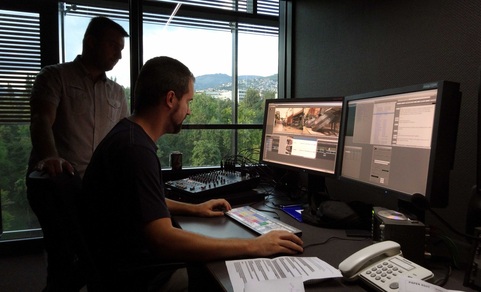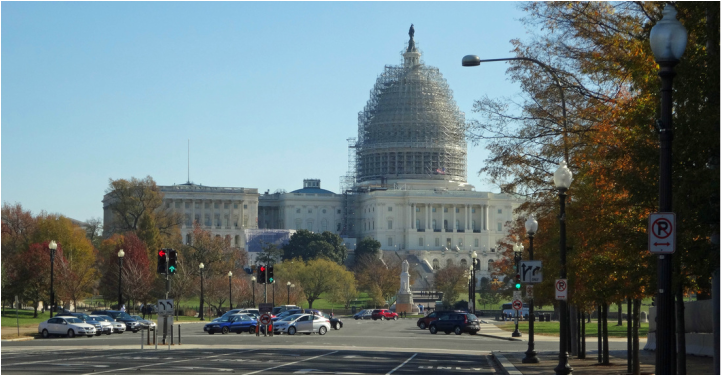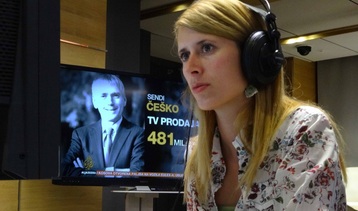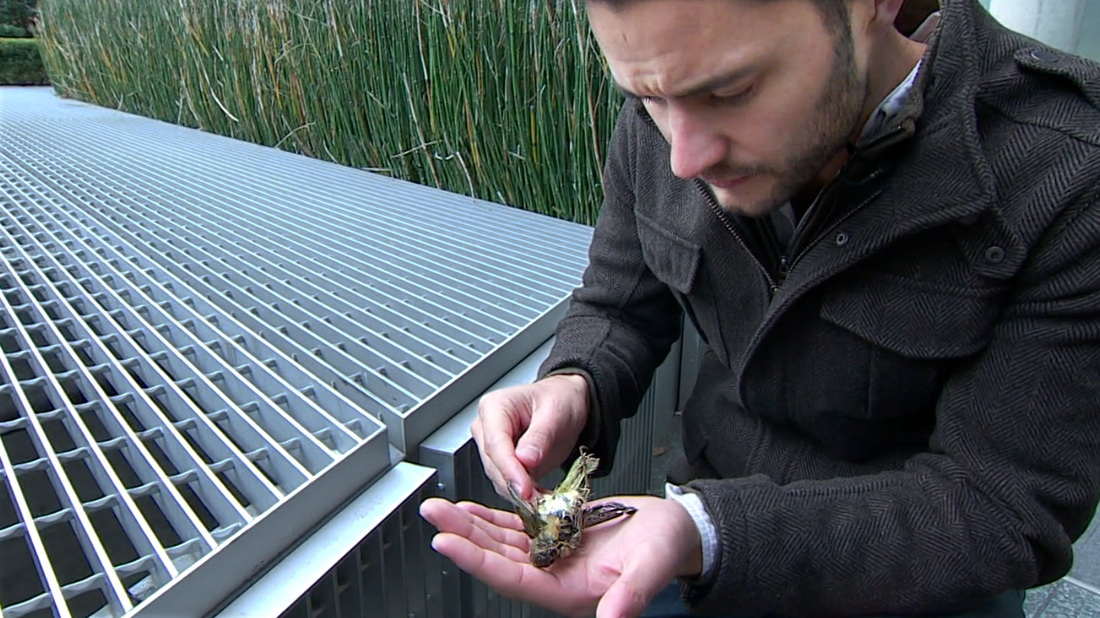CASE STUDY 1 : AL JAZEERA BALKANS, SARAJEVO

THE THOMSON FOUNDATION WEBSITE, October 2013
www.thomsonfoundation.org
Photos: MD
Communities of the Former Yugoslavia come together in the Al Jazeera Newsroom
For anyone who has spent hours closeted in a windowless edit-suite in central London, Al Jazeera Balkans comes as a joyful revelation. Here, on the sixth floor of a shopping mall in downtown Sarajevo, you can work alongside a picture-editor while looking out across the Bosnian capital to the hills that cradle it.
It’s an atmosphere of openness that imbues, physically and professionally, the newsroom alongside. The Sarajevo HQ is the high-tech hub of an operation that, for nearly two years now, has been covering the region of the former Yugoslavia, with offices in Zagreb, Belgrade and Skopje. It’s currently providing a rolling regional news service for six hours a day, while filling out the schedule with a mix of current affairs and documentaries, produced in-house or provided by the Al Jazeera mothership in Qatar.
I’m here to work with the AJB reporters on their news packages, in the role of trainer/mentor. I’m impressed – as much by the spirit of cooperation between the staff as by what appears on screen. Just twenty years ago, Serbs, Croats and Bosnians were engaged in the bloodiest European conflict since WW2. [It comes as a surprise when someone refers to ‘The War’ to realise they mean 1991-95, not 1939-45.] Yet here they are - Muslim, Catholic, Christian Orthodox - working together to produce what is arguably the best news output in the Balkans. Even those who lived through the break-up of the old Yugoslavia seem puzzled by the violence of those terrible times. As one producer ventured, ‘There are crazies in every society.’
There’s still the occasional tricky issue. Kosovo, for example – the self-proclaimed independent state claimed by Serbia – is shown on the channel’s maps in outline only; no name. And the ongoing trials in The Hague of former military commanders - a regular reminder of a painful, not-so-distant past - still have to be reported with professional objectivity.
www.thomsonfoundation.org
Photos: MD
Communities of the Former Yugoslavia come together in the Al Jazeera Newsroom
For anyone who has spent hours closeted in a windowless edit-suite in central London, Al Jazeera Balkans comes as a joyful revelation. Here, on the sixth floor of a shopping mall in downtown Sarajevo, you can work alongside a picture-editor while looking out across the Bosnian capital to the hills that cradle it.
It’s an atmosphere of openness that imbues, physically and professionally, the newsroom alongside. The Sarajevo HQ is the high-tech hub of an operation that, for nearly two years now, has been covering the region of the former Yugoslavia, with offices in Zagreb, Belgrade and Skopje. It’s currently providing a rolling regional news service for six hours a day, while filling out the schedule with a mix of current affairs and documentaries, produced in-house or provided by the Al Jazeera mothership in Qatar.
I’m here to work with the AJB reporters on their news packages, in the role of trainer/mentor. I’m impressed – as much by the spirit of cooperation between the staff as by what appears on screen. Just twenty years ago, Serbs, Croats and Bosnians were engaged in the bloodiest European conflict since WW2. [It comes as a surprise when someone refers to ‘The War’ to realise they mean 1991-95, not 1939-45.] Yet here they are - Muslim, Catholic, Christian Orthodox - working together to produce what is arguably the best news output in the Balkans. Even those who lived through the break-up of the old Yugoslavia seem puzzled by the violence of those terrible times. As one producer ventured, ‘There are crazies in every society.’
There’s still the occasional tricky issue. Kosovo, for example – the self-proclaimed independent state claimed by Serbia – is shown on the channel’s maps in outline only; no name. And the ongoing trials in The Hague of former military commanders - a regular reminder of a painful, not-so-distant past - still have to be reported with professional objectivity.
|
Sarajevo has had its share of ‘history’ – and more. This was where the shots that started the First World War rang out: the assassination in 1914 of Archduke Franz Ferdinand. And there are still buildings pock-marked by the enemy artillery of the 1990s – fired from those same hills one can see from the edit-suites. So it feels appropriate that Al Jazeera – battle-hardened in other conflicts in other places - should have chosen this city as the site for its Balkan operations. Despite siege and suffering, Sarajevo has survived.
|
CASE STUDY 2 : AL JAZEERA AMERICA, WASHINGTON DC
THE THOMSON FOUNDATION WEBSITE, February 2015: www.thomsonfoundation.org/
THE THOMSON FOUNDATION WEBSITE, February 2015: www.thomsonfoundation.org/

DEATH AT
DAWN
‘I think I’ve found a great story’, said Phil Torres, one of a dozen participants on a storytelling workshop in Washington.
The course was part of a Thomson training programme for Al Jazeera America, involving the production of ‘real’ stories - video-packages shot in the field with freelance operators and edited on laptops back in the training room. This being the first course of its kind with AJ AM, it was something of a trial run. Luckily, the participants were mostly experienced reporters and producers who accepted the role of crash-test dummies with professional equanimity.
Phil’s story? It was about birds… dead birds. Phil, one of the hosts of Aljazeera’s TechKnow science programme, had heard that civilian volunteers got up before dawn to collect the bodies of birds which had flown overnight into the windows of Washington’s buildings, and that they then took them to the Smithsonian Institution for identification and logging. (It’s estimated that across North America up to one billion birds die this way, despite the efforts of DC campaigners to persuade office-owners to turn off their lights after work.)
The good news is that the birds don’t die in vain. Recording their type and number, even the direction from which they hit the glass, helps the Smithsonian’s specialists to map migration patterns.
The bad news, it belatedly turned out, was that the migration season was over. So no story…
But Phil is not a man to give up. Instead, he managed to persuade one of the volunteers (as well as his cameraman Ralf Oberti) to rise before dawn and - hallelujah! – they chanced upon one tiny, battered avian corpse. Just one, but enough to tell the tale. It’s the sort of object lesson in perseverance that no amount of classroom theory can provide.
As we often say, in this business you make your own luck.

